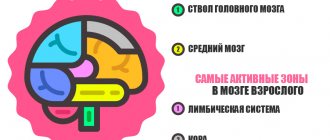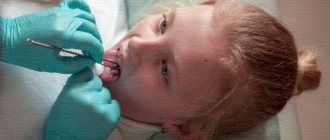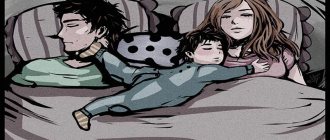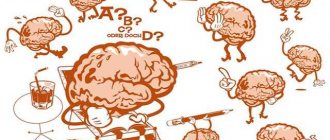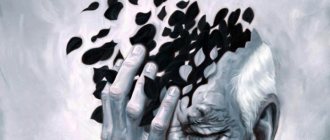How does erased dysarthria manifest in children?
A feature of erased dysarthria is the lack of expression of symptoms, which is why the disease is called that. Characterized by unclear articulation due to impaired motor skills, distortion of some sounds. The lack of intonation and inexpressive speech and the complexity of automation are noteworthy. The clinical picture may vary depending on the affected area: in one child the phonetic defect predominates, in another the prosodic defect predominates, in the third both components are present in equal volume.
Sound pronunciation disorder affects two or more groups of sounds. For example, hissing, whistling and sonorous. Speech with erased dysarthria is replete with distortions and replacement of sounds. The baby confuses dull, voiced, and soft sounds and cannot use them correctly. Even if you can overcome these problems, it is difficult to achieve automaticity.
At an early age, such children are usually observed by a neurologist. They are diagnosed with “perinatal damage to the central nervous system” and are given medication, courses of physiotherapy and massage. Over time, the child is removed from the register. Only when speech disorders do not go away do parents and doctors begin to look for the cause. As a rule, erased dysarthria is diagnosed in preschool children - at 5 - 6 years old.
Characteristics of the erased form of dysarthria, which parents themselves can notice, are poor facial expressions, lack of tone of the lips, tongue, asymmetry of the nasolabial folds and corners of the mouth. When performing articulation tests, involuntary movements of the tongue, its trembling and cyanosis occur. Increased salivation. It is difficult to keep the speech organs in one position.
It may be difficult for the baby to chew food, and he refuses to eat if it is in pieces. Infants have difficulty sucking milk and swallowing is impaired.
General development
Neurological status has changed. Noteworthy are persistent dermographism and sweating of the hands and feet. Children are easily excitable, restless, and make a lot of unnecessary movements. Or, on the contrary, they are inhibited and slow. Their memory and attention are impaired.
Physically, children lag behind their peers and are short, thin, and asthenic in build. They get tired quickly during physical activity and are clumsy. The synchronization of movements and fine motor skills suffer. It’s hard for a child to fasten a button, tie shoelaces, or do creative work. In physical education lessons he has difficulty completing assignments. Handwriting is impaired, and in general the child writes slowly.
DYSARTHRIA—
a violation of the pronunciation side of speech, caused by insufficient functioning of the nerves that provide communication between the speech apparatus and the central nervous system, that is, insufficient innervation.
The main manifestations of dysarthria: - disorder of articulation of sounds (speech is unclear, blurred) - disturbance of voice formation - change in the tempo and rhythm of speech - change in intonation.
The above listed manifestations of dysarthria appear to varying degrees and in various combinations, depending on the location of the lesion in the central or peripheral nervous system, the severity of the disorder, and the time of occurrence of the defect.
There is a so-called erased form of dysarthria
. Children with erased forms of dysarthria do not differ sharply from their peers. Erased dysarthria manifests itself in persistent disorders of sound pronunciation and speech prosody, arising as a result of unexpressed microorganic damage to the brain
With these defects, speech therapists encounter great difficulties and the period of production and automation of sounds in speech. Children with severe dysarthria need long-term, systematic individual speech therapy assistance.
ERASED FORM OF DYSARTHRIA
This form of dysarthria occurs very often in speech therapy practice. The main complaints with erased dysarthria: slurred, inexpressive speech, poor diction, distortion and replacement of sounds in words with a complex syllabic structure.
Children with severe dysarthria need long-term, systematic individual
speech therapy assistance.
Erased dysarthria in its manifestations is very similar to complex dyslalia.
Most often, erased dysarthria is diagnosed after five years. Children whose symptoms correspond to erased dysarthria should consult a neurologist to clarify or confirm the diagnosis and to prescribe adequate treatment, because in case of erased dysarthria, the method of correctional work should be comprehensive and include: medical intervention, psychological and pedagogical assistance, speech therapy work.
For early detection of this form of dysarthria and proper organization of complex effects, it is necessary to know the symptoms and causes that characterize this disorder.
The causes of erased dysarthria can be:
abnormalities in intrauterine development (toxicosis, hypertension (high blood pressure), nephropathy during pregnancy, etc.;
infectious diseases (ARVI, Influenza, etc.) suffered during pregnancy
asphyxia of newborns;
rapid or prolonged labor;
long waterless period;
mechanical obstetrics (forceps, vacuum).
In the first year of life, such children are observed by a neurologist, they are prescribed medication and massage. The diagnosis includes PEP (perinatal encephalopathy) for up to a year. And after a year, the diagnosis is either removed or MMD (minimal cerebral dysfunction) is given.
Development after a year, as a rule, is successful for everyone, neurologists no longer observe these children, and the child is considered healthy.
When examining children 5-6 years old with erased dysarthria, the following symptoms are revealed:
Gross motor skills:
children are clumsy, the range of active movements is limited, and they quickly tire under load. They stand unsteadily on one leg. They imitate movements poorly: how a soldier walks, how a bird flies, how bread is cut, etc. Motor incompetence is especially noticeable in physical education and music classes, where children lag behind in tempo, rhythm of movements, as well as in switching movements.
Fine hand motor skills: Children with erased dysarthria late and have difficulty mastering self-care skills: they cannot button a button, untie a scarf, etc. During drawing classes, they don’t hold a pencil well and their hands are tense. Many people don't like to draw. Motor clumsiness of the hands is especially noticeable during applique classes and with plasticine. In works on appliqué, difficulties in the spatial arrangement of elements can be traced. Children find it difficult or simply cannot perform an imitation movement without outside help, for example, “lock” - put their hands together, intertwining their fingers; “rings” - alternately connect the index, middle, ring, little fingers with the thumb and other finger gymnastics exercises.
According to mothers, many children under 5-6 years old are not interested in playing with construction sets, do not know how to play with small toys, and do not assemble puzzles.
School-age children in the first grade experience difficulties in mastering graphic skills (poor handwriting, slow pace of writing, “mirror” writing, letter substitutions).
Features of the articulatory apparatus:
In children with an erased form of dysarthria, the following features of the articulatory apparatus are observed.
Muscle pareticity
organs of articulation are manifested in the following: flaccid lips, the corners of the mouth are drooping, during speech the lips remain flaccid. The paretic tongue is thin, located at the bottom of the mouth, flaccid, the tip of the tongue is little active. With exercise (speech therapy gymnastics), muscle weakness increases.
Muscle spasticity
manifests itself in the following: the face is amicable, the facial muscles feel hard and tense to the touch. Lips in a half smile: the upper lip is pressed to the gums. Many children cannot make a straw out of their lips. The tongue with a spastic symptom is often changed in shape: thick, without a pronounced tip, inactive.
Hyperkinesis
with erased dysarthria, they manifest themselves in the form of trembling of the tongue and vocal cords. Trembling occurs under load. For example, when holding a wide tongue on the lower lip for a count of 5-10, the tongue cannot maintain a state of rest, trembling and slight blueness of the tip of the tongue appears, and in some cases waves roll across the tongue in the longitudinal or transverse direction. In this case, the child cannot keep his tongue out of the mouth. Hyperkinesis is often combined with increased muscle tone of the articulatory apparatus.
Apraxia
manifests itself in the inability to perform certain movements of the articulatory apparatus or switching from one movement to another. Some children experience kinesthetic apraxia, when the child makes chaotic movements, “groping” for the desired articulatory position.
Deviation,
those. deviation of the tongue from the midline, manifests itself during speech therapy gymnastics (when holding a pose, switching from one exercise to another)
Hypersalivation (
increased salivation) is determined only during speech. Children cannot cope with salivation and do not swallow saliva.
Children with an erased form of dysarthria, according to instructions, perform all the movements from speech therapy gymnastics, but the quality of these movements suffers: blurredness, unclear movements, weak muscle tension, arrhythmia, decreased amplitude of movements, rapid muscle fatigue, etc. This leads to distortion of sounds during speech. , mixing them up and deteriorating the overall prosodic aspect of speech.
Sound pronunciation
with erased dysarthria it is characterized by: confusion, distortion, replacement and absence of sounds, i.e.
the same options as for dyslalia. Sounds with erased dysarthria are produced in the same ways as with dyslalia, but for a long time they are not automated and speech is not introduced. The most common defects in sound pronunciation are violations of whistling and hissing sounds. Quite often, interdental pronunciation and lateral overtones are noted. Children have difficulty pronouncing words with a complex syllable structure; they simplify the sound content by omitting some sounds when consonants are combined. ( mitione
instead of
policeman
).
Prosody.
The intonation-expressive coloring of the speech of children with erased dysarthria is sharply reduced. The voice suffers, vocal modulations in height and strength, speech exhalation is weakened. The timbre of speech is disrupted and a nasal tone appears. The pace of speech is often accelerated. When reciting poems, the child’s speech is monotonous, gradually becomes less intelligible, and the voice fades away. The voice of children during speech is quiet, modulation in pitch and strength of the voice is not possible (the child cannot change the pitch of the voice by imitation, imitating the voices of animals: cows, dogs, etc.)
In some children, speech exhalation is shortened, and they speak while inhaling. In this case, speech becomes choking. Quite often, children are identified (with good self-control) in whom, during a speech examination, deviations in sound pronunciation do not appear, i.e. because they pronounce words in a scanned manner, that is, syllable by syllable, and only the violation of prosody comes first.
Speech therapy work for erased dysarthria requires the mandatory inclusion of parents in correctional work with the child.
At the initial stages, work is envisaged to normalize the motor skills of the articulatory apparatus - speech therapy massage, speech therapy gymnastics. Work to strengthen your voice and breathing is mandatory.
An obligatory element of speech therapy work is the development of fine motor skills of the hands.
Causes of erased dysarthria in preschool children
The main reason for the erased form of dysarthria is a violation of the innervation of the muscles of the lips, tongue, and soft palate.
Such disorders are caused by organic brain damage in various periods of child development:
- During the prenatal period, the fetus can be negatively affected by infectious diseases of the mother (herpes infection, rubella, toxoplasmosis, viral hepatitis, cytomegalovirus infection). Immunological incompatibility of the fetus and mother, toxicosis, decompensated diabetes mellitus or gestational diabetes play a role. As a result of these conditions, fetoplacental insufficiency develops, the fetus experiences oxygen deficiency, that is, hypoxia;
- During childbirth, traumatic injury is possible as a result of rapid or protracted labor or the use of obstetric forceps. A long anhydrous period has a negative effect;
- In the postpartum period and in the first year of a child’s life, damage to the central nervous system can occur due to injuries, infectious and other severe diseases, inflammatory diseases of the substance and cerebral cortex.
All of these factors lead to damage to the nerves that innervate the muscles of the articulatory organs: trigeminal, facial, glossopharyngeal, sublingual. Each nerve has its own characteristics. For example, damage to the trigeminal nerve is indicated by limited movements in the lower jaw, lips, tongue, facial nerve - facial muscles, glossopharyngeal nerve - root and back of the tongue, hypoglossal nerve - impaired tongue motility, difficulty raising the tongue to the palate.
Types and degrees
The classification of dysarthria is based on the localization of the pathological focus, which determines the severity of certain symptoms. The following types of pathology are distinguished:
- bulbar: associated with damage to the nerve nuclei in the medulla oblongata;
- pseudobulbar: occurs when there is a pathology of the nerve fibers responsible for conducting impulses from the cortex to the nuclei of the cranial nerves;
- extrapyramidal (subcortical): the functioning of the subcortical nuclei is disrupted;
- cerebellar: occurs with pathology of the cerebellum and nerve fibers coming from it;
- cortical: pathological foci form directly in the cerebral cortex.
Depending on the severity of the pathology, there are 4 degrees of the disease:
- first (erased): problems with the pronunciation of sounds are discovered only during an examination by a speech therapist;
- second: pronunciation defects are clearly visible to others, but the patient’s speech remains understandable;
- third: the sounds are changed to such an extent that the patient is understood only by close relatives who are in constant contact with him;
- fourth: speech is impossible or is an incomprehensible set of sounds.
Diagnosis of erased dysarthria
Erased dysarthria is diagnosed using a number of medical and pedagogical studies. Be sure to study the child’s medical history, as well as the course of pregnancy and childbirth in the mother. An analysis of the outpatient card is carried out: the results of instrumental diagnostic methods may be needed.
The examination is phased and includes:
- Speech therapy examination involves assessing the state of motor skills, facial muscles, articulatory apparatus, and speech breathing. After this, the speech therapist studies the quality of sound pronunciation, vocabulary, grammar, and the ability to capture various sounds. If an erased form of dysarthria is suspected, the patient is referred for consultation to a neurologist;
- An examination by a neurologist is needed to identify the nature of the disorders - hyperkinesis, paresis, dystonia, atony. The doctor also determines the location of the brain lesion. To clarify the diagnosis, EEG, electroneuromyography, CT, and MRI are prescribed.
After the baby has passed all the examinations, he will be consulted again by a speech therapist/speech pathologist. Having the conclusions in hand, he determines the type of speech disorders and draws up a plan and form of work with the child.
Treatment of erased dysarthria
The therapy is complex, carried out with the participation of a neurologist, psychologist and speech therapist. This tactic allows you to achieve a positive result, consolidate it and compensate for the speech defect.
The medical side of correctional work is to stimulate brain metabolism, which is achieved by prescribing nootropics and vitamins. The effect is strengthened by courses of massage, therapeutic exercises, reflexology, and physiotherapeutic methods. If possible, you can get medicinal baths and visit the pool.
Working with a speech therapist
At the initial stage, the speech therapist “sets” defective sounds and corrects other speech disorders. Then comes the consolidation of the normal pronunciation of sounds: the baby learns to use them in syllables, words, phrases. It usually takes a long time to overcome erased dysarthria. Automating sounds is a complex form of work that requires patience and effort.
At the same time, the specialist eliminates phonemic disorders, develops intonation and expressiveness of speech, and teaches grammar.
One of the components of correctional work for latent dysarthria is speech therapy massage. Probe massage is very effective. It allows you to normalize the tone of the muscles involved in articulation, helps the baby to feel them better when speaking, which means to control the position of the speech organs during sound pronunciation. Conducted separately or in parallel with the main course.
Finger and articulation gymnastics are effective:
- The coordination of hand movements is associated with the articulatory function, so a lot of time is devoted to finger gymnastics. It can be supplemented with play-based activities. For example, the child is asked to collect beads, puzzles, build construction sets, sculpt, and cut out. Of course, it is important to choose a complex that the patient enjoys and enjoys;
- Articulation gymnastics helps strengthen muscles. After them, it is easier for children to give the correct position to the speech organs during sound reproduction and switch to other sounds.
Breathing exercises are also shown - it trains breathing, teaches the child to correctly use a stream of air when speaking, and makes speech more expressive.
Corrective work for erased dysarthria is long-term: up to 1 year or more. The timing depends on the severity of the disease, concomitant speech disorders, and regularity of classes.
Role of parents
With erased dysarthria in preschoolers and primary schoolchildren, the role of parents is invaluable. After all, it is important to strictly follow the doctor’s recommendations and treatment plan. The result depends on this and how soon your child will start talking normally. If your doctor deems it necessary, do the exercises at home: this will speed up your recovery. But don’t overdo it, make sure your baby is in a good mood during homework. Now he is not in the mood for classes, so put them off.
The baby also needs your support. He must know and feel that he is not alone with the problem, that his dad and mom are nearby, who will always understand, support, and take care of him. It is important for a child to know that he is loved, despite his speech impediment. This way he will work harder and it will be easier for you to achieve the effect.
Possible complications
Disorders in the erased form of dysarthria cause defects in the perception of sounds. At the same time, the perception of not only similar-sounding phonemes, but also other sounds is impaired. Over time, the lack of clear speech and the impossibility of normal auditory perception leads to difficulties in understanding the syllable structure.
There are problems with grammar and poor vocabulary. If timely correction is not started, then younger schoolchildren’s writing will suffer.
In children, even with minimal characteristics of an erased form of dysarthria, communication skills suffer. They cannot build a dialogue and generally talk with people. They avoid groups, try to avoid new acquaintances and communication in general. If they attend kindergarten, they play alone. They are also kept apart at school.
This creates the preconditions for psychological problems and secondary speech disorders. For example, children may begin to stutter and develop enuresis.
Dysarthria. Erased dysarthria. article on correctional pedagogy on the topic
Dysarthria is a speech disorder caused by a change in the nervous regulation of the speech apparatus in which pronunciation suffers. Considering that in recent years the proportion of pathological pregnancies has been increasing and the general level of health of mothers and their children is decreasing, the problem of speech disorders is becoming increasingly urgent.
Causes
The causes of dysarthria are:
- intrauterine infections;
- severe toxicosis during pregnancy in the mother;
- birth injury;
- previous infections of the central nervous system (meningitis, encephalitis);
- cerebral ischemia in newborns;
- malformations of the nervous system;
- severe hereditary diseases.
Classification
Speech therapists determine the types of dysarthria based on the severity of symptoms:
- severe (anarthria) - patients do not speak at all and there is complete immobility of the speech muscles.
- moderate severity, when the mobility of some muscle groups and the articulation of individual sounds are preserved.
- erased dysarthria (mild degree). In this case, there is blurred speech, children speak through their noses, and unclear sound pronunciation.
Neurologists classify dysarthria according to the location of the lesion in the brain. There are 5 forms:
- Cortical - the development of writing and reading is disrupted, the development of vocabulary is difficult. Individual sounds are pronounced well, but difficulties arise in the speech flow - replacing some sounds with others. When the rate of speech accelerates, hesitations begin, reminiscent of stuttering.
- Pseudobulbar form - voluntary movements change, for example, it is difficult to raise the tip of the tongue upward, but involuntary movements remain - stretching the lips with a tube, smacking, sticking out the tongue, licking, loud crying and laughter. Children cannot open their mouths or utter a sound upon request, while yawning, sneezing, crying, and coughing persist. The pronunciation of sounds is voiceless, but in some cases deaf people can be voiced. A sagging palate results in a nasal tone in speech. Fine motor skills of the hands suffer - it is impossible to tie shoelaces or fasten buttons independently. Children do not know how to sculpt and draw. As a rule, a child hears his defects and tries to fight them, which can lead to even greater manifestations of disorders due to increased muscle tone due to anxiety.
- Bulbar - leads to paresis or paralysis of the muscles of the tongue, palate, chewing and swallowing are impaired. The voice of such children is weak, pronunciation is nasal. Speech is slurred, unclear, unintelligible. On examination, you can see atrophy of the muscles of the tongue and pharynx, atony, and the face is amicable.
- Subcortical dysarthria is manifested by a violation of intonation and speech rate. More often it becomes noticeable with excitement and emotions. Features of this form are hyperkinesis both in the speech muscles and in the muscles of the body. The patient can correctly speak words and phrases with loved ones and in a state of emotional comfort, and a moment later - not utter a sound. The voice is interrupted, there may be spontaneous cries, guttural sounds. Characteristic is a violation of tempo, rhythm, and intonation. Manifestations vary depending on the patient’s condition and this affects the ability to communicate and maintain a conversation. Sometimes hearing loss may be concomitant, which complicates speech defects.
Symptoms
With dysarthria, the pronunciation of both consonants and vowels suffers. Violations can manifest themselves in the form of absence of sounds, replacement of them with others, distortion and mixing of them. The motility of the muscles responsible for the formation of speech changes - their tone is disrupted, which manifests itself both in increased spasticity of the muscles of the tongue, face, lips, neck, and hypotension (decreased tone).
Dystonia is manifested by the fact that at rest the muscle tone is reduced, but when trying to talk (speech, pronouncing words) it increases sharply. There may be restrictions on muscle mobility due to changes in tone and hyperkinesis (involuntary movements), tremor (shaking).
Speech breathing disorders are manifested by changes in the tone of the respiratory muscles, movement disturbances, changes in the voice, melody, and intonation. The strength of the voice may suffer, becoming weak and quiet, as if strength is running out. The timbre is dull, dull, and difficulties arise in changing the tone.
Dysarthria is often accompanied by symptoms not related to speech - these may be disturbances in chewing, swallowing, sucking, changes in the emotional-volitional sphere, lack of interest in the outside world and acquiring new knowledge.
Erased dysarthria
This is the most common type. Children speak through their noses and their intonation may be disrupted. When speaking, articulation is not expressed, lip movements are minimal. The problem is to form a tube from the lips. Patients have poor diction, unclear, slurred and slurred speech, replacement or distortion of sounds in polysyllabic words. The poems are told monotonously, the voice gradually fades away. When asked to imitate animal sounds, attempts are unsuccessful.
In general development, one can note awkwardness in movements; such children grasp and hold objects later than healthy ones, walk and run awkwardly, and it is difficult for them to jump on one or two legs. The child has a hard time learning to skate, ski, and ride a bike. Due to impaired fine motor skills of his fingers, he is not good at sculpting, drawing, putting together mosaics, does not like small toys and does not play with construction sets. Children with an erased form of dysarthria have difficulty writing and reading and have poor handwriting.
Diagnostics
Dysarthria can be diagnosed based on several symptoms or syndromes. This may be a change in the tone of the muscles responsible for pronunciation and speech formation - facial expression, lethargy or spasticity of the tongue, trembling in the tongue, the inability to perform movements such as curling the lips into a tube, raising the tongue up and down. There is a nasal tone of speech and drooling.
Characteristic is difficulty in pronouncing not one, but several sounds, fading and slowing of speech towards the end of the phrase, pronunciation becomes unintelligible. The intonation changes and becomes unnatural. Children speak monotonously and slowly.
It is important to assess the medical history - the presence of previous intrauterine pathology or complications during childbirth, neurological and electrophysiological examination (electroneurography, electroencephalography).
Correction
Treatment by a neurologist is mandatory - medicinal and restorative, which is prescribed after establishing an accurate diagnosis and type of disease. In addition to medications, reflexology, massage, physiotherapeutic methods, and psychotherapy are used. Non-traditional forms of influence are widely used - dolphin therapy, play therapy.
Working with a speech therapist
Children with dysarthria need constant work with a speech therapist.
The specialist divides classes with children into specific blocks. First, a speech therapy massage is performed, which is designed to normalize the tone of the speech muscles. Next, articulatory gymnastics classes, breathing and intonation training. Children are taught to self-control their pronunciation. The exercises become more difficult as you master them.
Activities aimed at developing fine motor skills of the hands are mandatory, since the muscles responsible for precise small movements are associated with the articulatory apparatus.
In severe cases, training in special schools for speech correction is indicated.
Prevention
Children with an increased risk of developing dysarthria (pathology of intrauterine development, trauma during childbirth, previous neuroinfections) need constant attention with an emphasis on psychophysiological development. It is necessary to monitor the regime and prevent the influence of unfavorable physical and psychological factors.
These children need constant communication, conversation, it is necessary to support babbling at an early age, and stimulate babbling. Attention is paid to the development of grasping movements, encouraging the exploration of toys of various shapes and surfaces.
Children begin reading books as early as possible, showing and describing pictures, trying to get a response.
Forecast
With the earliest possible start of correction and rehabilitation in the case of an erased form of dysarthria, the prognosis is favorable. Success depends on the diligence of the patient himself, a favorable psychosocial background, and the support of parents and loved ones.
In the case of severe forms, with timely treatment, active work with a speech therapist, and placement of children in special schools, a significant improvement in speech can be achieved.
In the video, the speech therapist teacher talks about games and techniques that parents can use to develop their children’s speech:
Prognosis and prevention
Any speech defect, including an erased form of dysarthria in preschool children, entails psychological disorders. If the disorder is not detected in time, diagnosed and therapy is not started, the baby will grow up with this pathology, and others will join it. In such situations, it is difficult for a person to live in society: he is limited in his choice of profession and self-realization. Because of this, he may feel depressed, which can further lead to depression.
Prevention of erased dysarthria begins during pregnancy planning. The expectant mother needs to undergo examination at this stage and prepare for conception: undergo a course of treatment, if there are any problems, eliminate deficiency conditions (anemia, hypovitaminosis).
After pregnancy, you need to be careful about your food choices and daily routine. The expectant mother should have enough rest, walk, avoid physical strain, injury, and stress.
It is important to competently manage labor and avoid injuries and hypoxia. During the newborn period, follow the doctor’s recommendations and undergo examinations on time. If you suspect any developmental abnormality, tell your doctor. Timely diagnosis and therapy are mandatory conditions for the earliest possible recovery and a guarantee that the disorder will not affect the baby’s development in the future.
